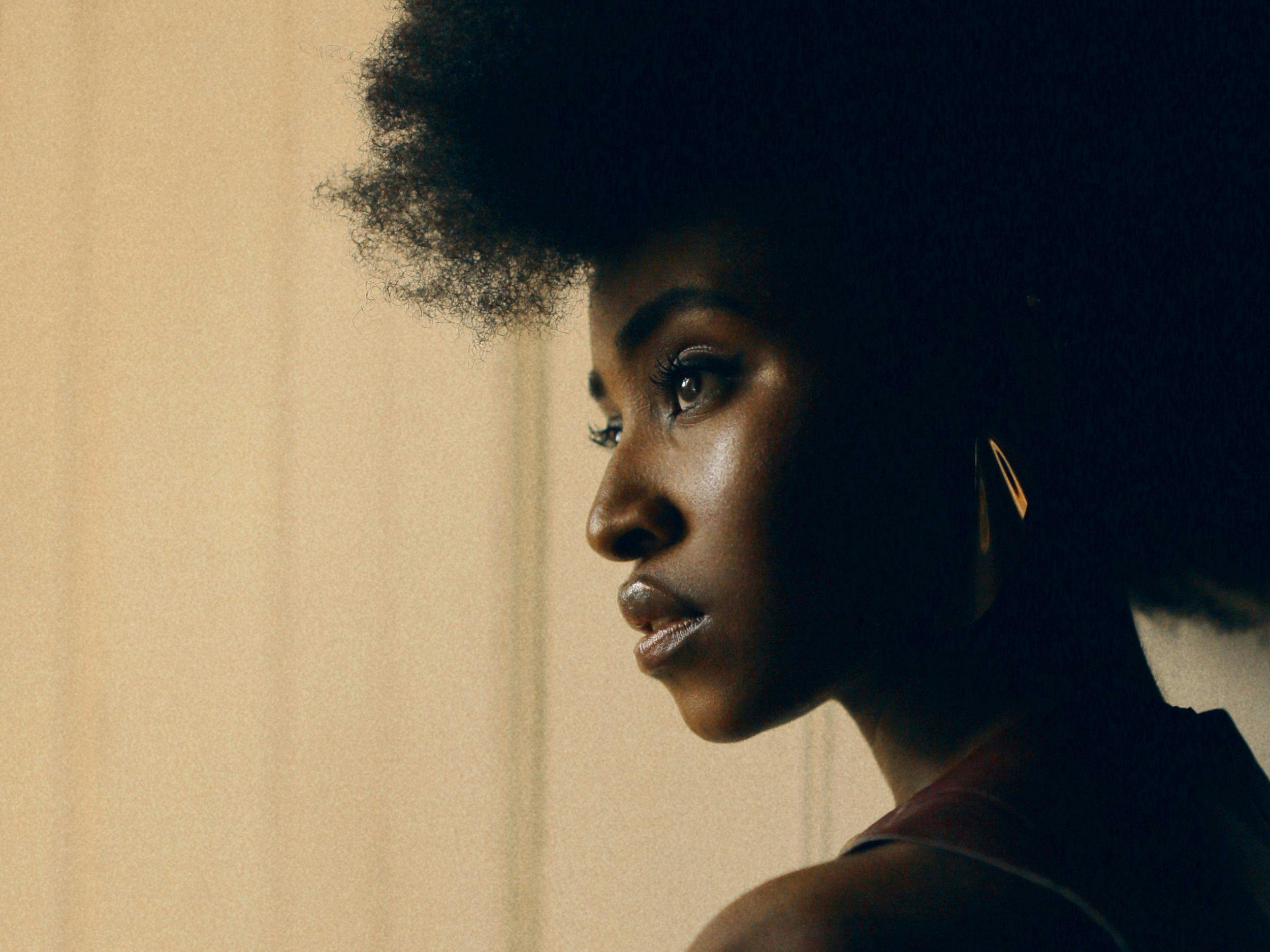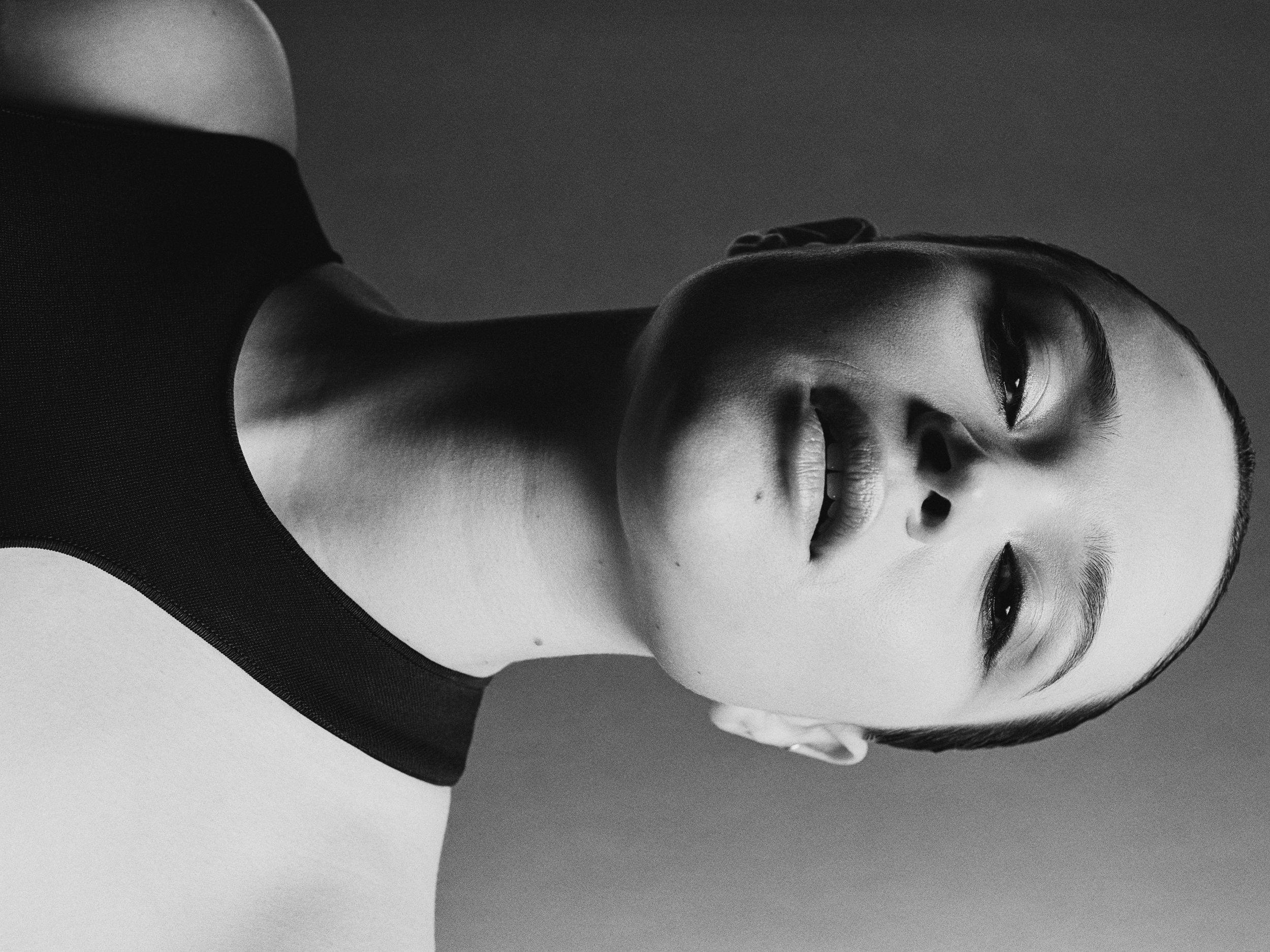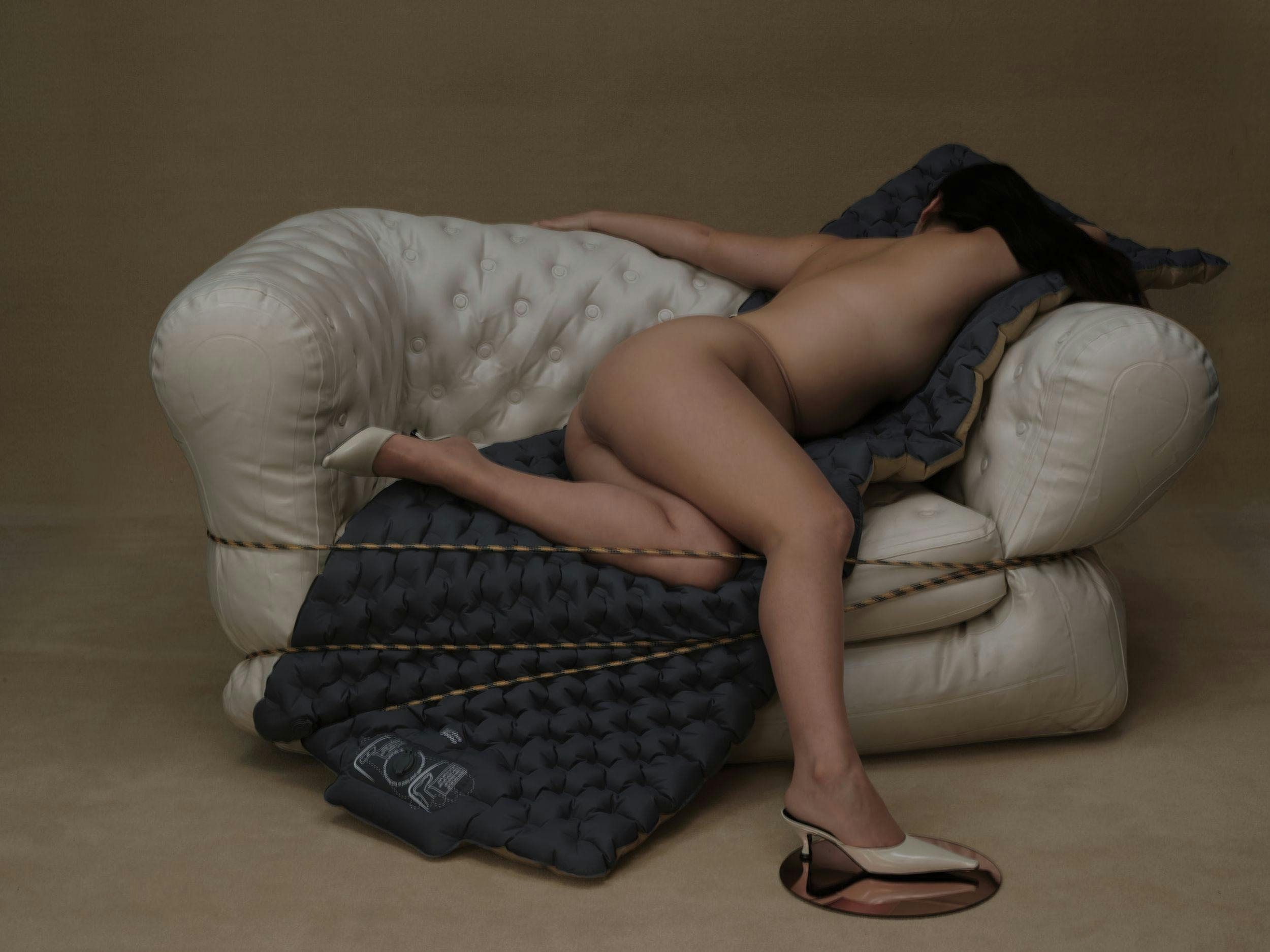
All clothing by Versace
Alexandra Kleeman’s Future Is Here Today
In Giovanni Boccaccio’s Decameron, one of the earliest masterpieces of Italian literature, ten Florentines flee to a villa in the Tuscan countryside to escape the black plague, which is ravaging their hometown. Over the course of two weeks, they share one hundred tales with each other, a reminder of fiction’s power to not only comfort us and make sense of traumatic times but also to serve as the connective tissue between people. Earlier this year, during the depths of our own modern-day pandemic, the American author Alexandra Kleeman found herself cloistered on a campus in the heart of Rome for six months, surrounded by academics and artists who were all similarly trying to find their way and make meaning of a society upended. As fellows at the American Academy in Rome, she and her colleagues were reaping the rewards of an application process that began in 2019, in an entirely different world.
A professor of creative writing at the New School and a resident of Staten Island, Kleeman had spent much of 2020 in Colorado, where she grew up, teaching classes over Zoom and uprooting invasive species as a volunteer with a land restoration organization while preparing for the release of her second novel, Something New Under the Sun, which was published in August. Being in the Eternal City helped put Covid-19 in perspective for her. “There’s something about being in a city that’s been through many plagues before and many other kinds of major existential crises,“ she says, “that helps you think about things in a slightly longer timeline.“
With Something New Under the Sun, it’s clear that Kleeman has existential crises on her mind. She has become accustomed to describing the book as taking place in the “near future,“ but with its backdrop of a Los Angeles buffeted by omnipresent wildfires and a water emergency that has led to the invention of WAT-R, a manufactured substitute, it can be difficult at times to distinguish the environment she has created from the one we are living in today. “You go from writing at the start a book about a world that you think, based on the information, is coming and you’re going to get ahead of it,“ she says, “and then you’re writing about the world that you’re actually seeing around you. Things change so quickly right now.“
Like many authors before her, Kleeman has found in Southern California an evocative blend of the sinister and the banal, refracted through her own idiosyncratic lens. The protagonist of Something New Under the Sun, Patrick Hamlin, is an author from New York who has relocated to Los Angeles to take part in the film adaptation of his well-regarded novel Elsinore Lane. In typical Hollywood fashion, his thoughtful rumination on love and the loss of his father has been turned into a supernatural thriller—seemingly based on the appearance of the word “ghost” on the jacket—and his role is less that of screenwriter than personal assistant, relegated to ferrying the film’s tempestuous starlet, Cassidy Carter, to and from set.
From its beginnings as an absurdist satire of the movie industry, the novel quickly takes a number of surprising and menacing turns. The city is quite literally on fire and the rich drink melted Icelandic glaciers in the Hollywood Hills while the rest watch their precious stores of WAT-R dribble out onto sizzling pavement from the leaking plastic silos at the end of every driveway. The film’s producers send Patrick on a series of errands to abandoned storefronts, manufacturing plants, and memory clinics, which have sprung up in response to a mysterious new epidemic of dementia. Back East, his wife and daughter have secluded themselves at a retreat centered around a daily mourning ritual for environmental loss. The message is Greta Thunberg’s, but the tone is Yorgos Lanthimos’s. “The term that I really clung to was ’pre-apocalyptic novel,’“ Kleeman explains. “I’d read so many post-apocalyptic novels over my life. I’m so curious about them, but I’m also so frustrated by them because by situating themselves after the thing’s already happened and dealing with the fallout, I feel like it really allows us to avoid looking at ourselves in the present and thinking about what can actually be done in the present—what we can see around ourselves and how we can tie the little signs and signifiers in our everyday lives to larger crises.“
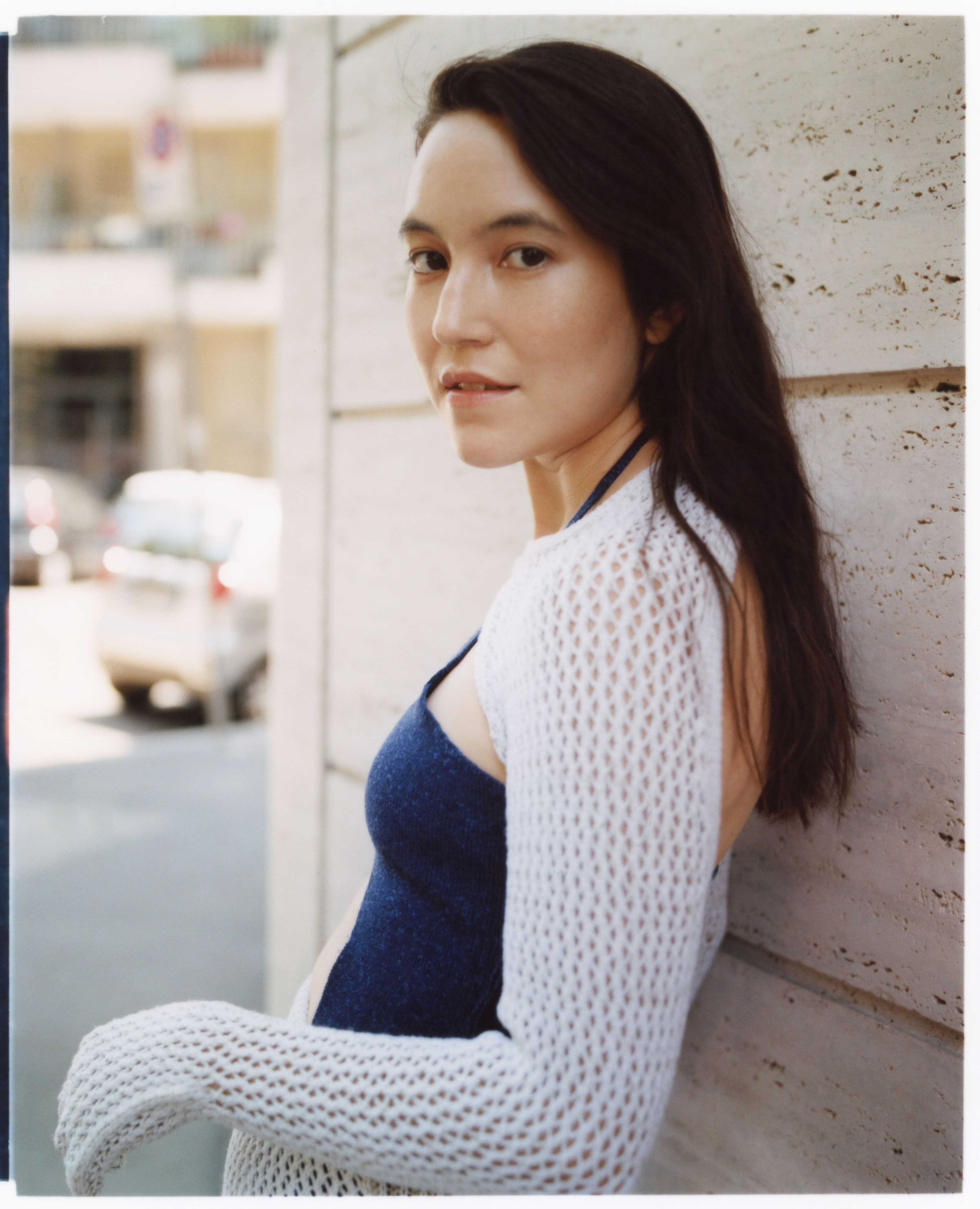
All clothing by Isa Boulder
Less than a week after the publication of Something New Under the Sun, the United Nations released a comprehensive report warning that our accumulated carbon emissions have already pushed us past the point of no return in the climate crisis. Increasingly deadly heat waves, tropical storms, floods, wildfires, and rising sea levels are no longer consequences for us to try to avoid, but ones we must prepare for. That same sense of urgency courses through Kleeman’s book, which aims to place its human dramas within a larger context of catastrophic change. “Often the way that reality is configured in human-centered novels is designed to make the world feel still while the humans move around in it,“ she explains. “They are really the focal point. Characters are the things that change—not the world—in a lot of novels, but it feels to me like we’re at a turning point where the world is suddenly changing so fast. It’s taking on dramatic features. It has personality, it has momentum. You can watch the world change in real time.“
Kleeman often speaks of her writing process as if she were setting up an experiment—establishing parameters and guidelines before setting the plot loose to find its course—understandable for someone who studied cognitive science in college and has worked in biopharmaceutical and genetics labs. Her previous books, the novel You Too Can Have a Body Like Mine and the short story collection Intimations, take their fascinating premises to unexpected ends, and the latest does much the same. “I go, ’I can use this sort of situation to explore this thing and I have no idea where it’s going to go, what the plot that it draws out is going to be, but I know that I have a setup that I can then build and run to observe,’“ she explains. “I think that this means that I start from situation more than from characters.“
Her next book will begin with an even more elaborate foundation. After exploring food in her first novel—about a cult built around a snack food called Kandy Kakes—and now water in her second, Kleeman is turning her attention to another essential resource: money. The project will be separated into five sections, each set in a different time period on a different island “where money is sort of de-centered,“ she explains. “Money is this strange substance that on the one hand is so naturalized—we can’t imagine a life without it—but which also has insinuated itself into our sense of necessity.“ As the daughter of a Taiwanese mother, she plans to incorporate her family history into the work, taking inspiration from her grandparents’ experience under Japanese occupation before World War II. “It’s a sort of utopian project,“ she laughs, “but some of it takes place in places that have actually existed.“
The tools of inquiry and investigation that served Kleeman so well as a lab assistant years ago continue to play a prominent role in her work as an author today. She admits that she is engaged in an ongoing effort to relinquish some measure of control over her output and welcome in some of the unruliness of the real world, no easy task with fiction, which emanates entirely from the writer’s mind. “I think that a lot of my personal life as an artist has been trying to figure out where I can open up spaces for chance and asymmetry and unwilled things to creep into work. When the work opens up an opportunity for you to play with something that it’s shown you, then you should allow yourself to be diverted from what your main goal is and just explore,“ she says. “All fictional worlds are ultimately limited simulacra of our real world, which is so vast and so intricate, so anything that you can seize on that feels like it comes not from this very conscious, premeditated intention might be a way of gesturing toward the realness out there of an uncontrollable and unexpected reality that throws up surprises every so often.“
Something New Under the Sun is out now. Read this story and many more in print by ordering our second issue here.

Top by ACK
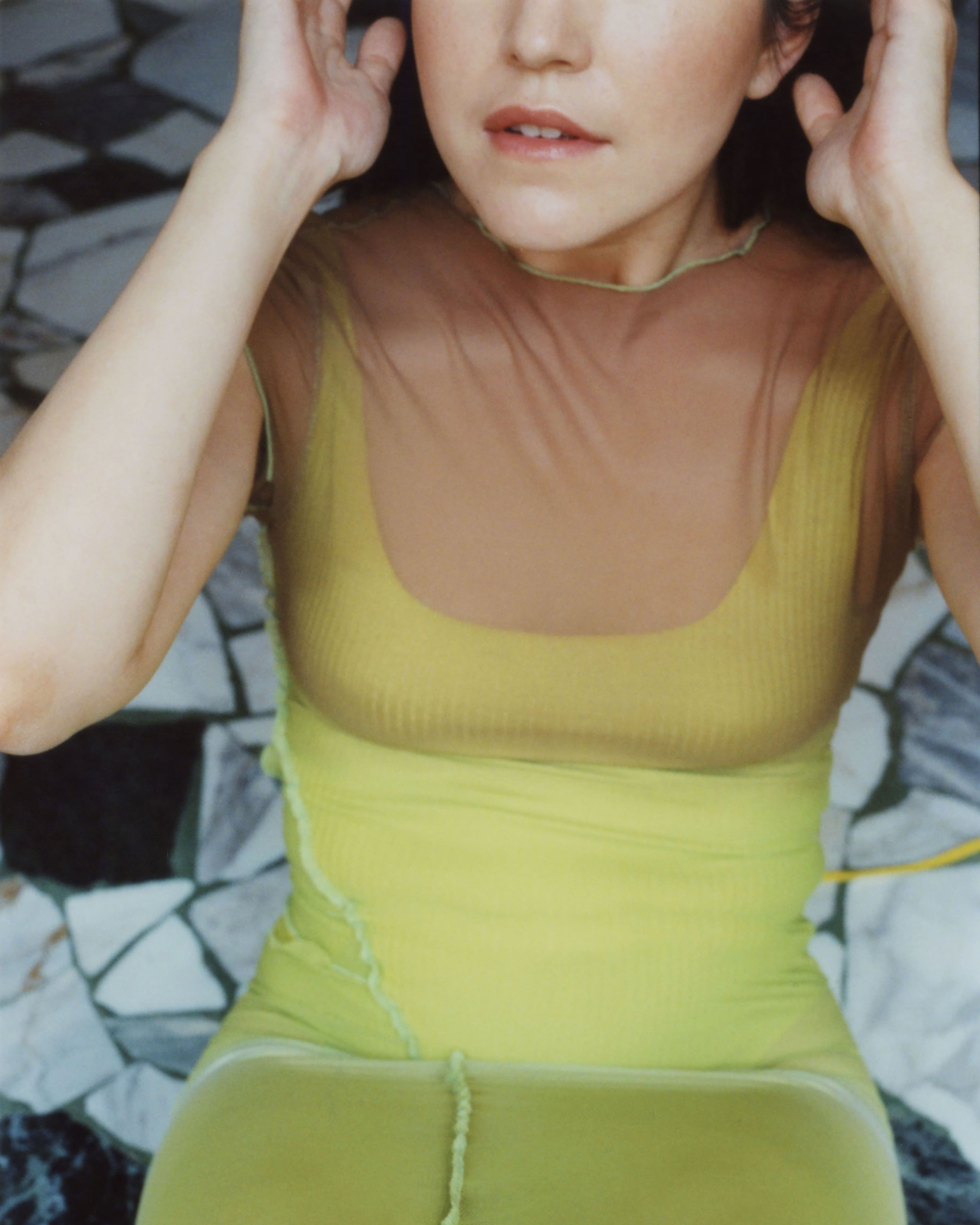
All clothing by ACK
As a nonprofit arts and culture publication dedicated to educating, inspiring, and uplifting creatives, Cero Magazine depends on your donations to create stories like these. Please support our work here.


